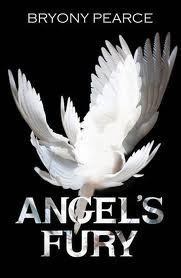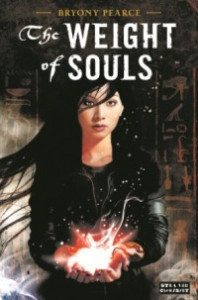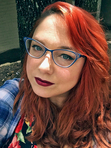E. Kristin Anderson's Blog, page 32
September 17, 2013
Banned Books Month: Guest Post from Ken Scholes: Reflections of a Repentant Book-Burner
Whenever Banned Book Week comes around I feel a bit of a jolt as my past revisits me and reminds me just where I come from and how far I’ve travelled. You see, I once favored banning books. I thought that controlling the ideas people were exposed to – and the thoughts and feelings those might evoke — was not just prudent but necessary in order to keep the world on track…especially by keeping our children safe from what I perceived as dangerous. And back around 1982, I even joined the ranks of the frightened, ignorant and narrow-minded by actually burning some books. I got better.
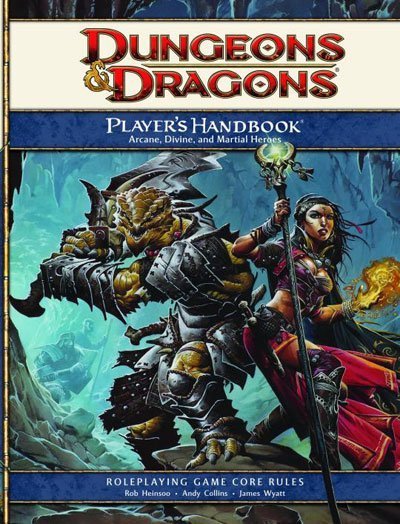
Wizards of the Coast, 4th Edition, June, 2008.
This is how it happened.
In 1980, I fell into a phenomenon called Dungeons and Dragons. I was already up to my neck in fantasy and science fiction, feeding myself a steady supply of televisions, movies and books. When D&D showed up, it was a match made in Heaven. But, growing up in a trailer where there were pictures of Jesus and crosses placed strategically on the walls to keep the demons out of our home and hearts, that match became less Heavenly and more Hell-spawned the deeper I progressed into the game. It was a time when evangelical and fundamentalist Christians were uptight about backmasking in rock music and Satanism was everywhere. People were cashing in on the scare and building their own careers in the Christian subculture with so-called ministries based on their experiences with the occult. Dungeons and Dragons was a ripe target and even the mainstream media jumped onto the bandwagon as parents blamed the game for what went wrong with their children.
At issue was the notion that within the game, young people could role-play characters with evil alignments while using magic and worshiping strange gods as they went about looting dungeons and bashing orcs. It didn’t matter that the game – unlike many games before it – offered some significant skill-building that transferred into daily life. Already comfortably saturated in the Land of Make Believe, I had no difficulty grasping that this was simply a game, that the magic wasn’t real and that the role-playing was simply role-playing. For me, the issue went further than that because I knew deep down on the inside, if I were rigorously honest, I loved D&D more than any of the trappings of my faith and, in my adolescent mind, loved it more than God. So, somewhere in the midst of Bill Gothard’s Basic Youth Conflicts and Billy Graham’s Tacoma Dome crusade, I built a neat pile in the yard out of several hundred dollars of books along with all of my notes, maps, characters, campaigns) and dowsed them with gasoline. The fire burned a long time and I watched it go, weeping tears of holy zeal.
My mother was so proud. No, really. She was.
A few years later, I sold off my rather large collection of science fiction and fantasy books, gave up writing stories and started preaching at the young age of seventeen. My first sermon was entitled “Put on the Full Armor of God” taken from a passage in Ephesians, “that ye may stand against the wiles of the devil.” Again, I got better. Eventually.
I spent over a decade preaching within a fundamentalist, evangelical framework and throughout the course of that time, I believed (and taught others to believe) a lot things I now find abhorrent and dangerous. To include trying to control the thoughts and ideas of others through censoring and controlling what they were exposed to. Thirty years later, now parenting small children of my own, I think a lot about that young man I used to be and what possessed him to ever burn a book. And I think a lot about the long, winding path that took me out of that mindset and into the freethinking, secular, reason-based worldview I have today.
I had, in hindsight, a rather fragile worldview – a system of beliefs I’d largely been taught to accept by the authority of my parents and the culture I grew up in. It was fragile in that it had to be shielded from other thoughts and ideas in order to stand on its own. And those kinds of worldviews – especially ones fraught with magical thinking – are designed to protect themselves by controlling and rejecting outside influences and ideas that might be contrary to the “party” line. Caught up in those beliefs, the people who are banning, burning and censoring usually can’t see beyond the good they intend with their actions and beliefs. And I know that when I was in the thick of it – or when I was later boycotting Disney or shows like Will and Grace – I really did intend good. Because I really did believe the ideas I was resisting were harmful to our species, especially our children. I was blind to the reality of the situation – that I was actually afraid and ignorant, closed off to anything that might challenge my sense of the universe.
So what happened?

Tor Books, June 2013.
Over time, those ideas – and the groups of people who represented them – became less scary as I was exposed to more and more to them. A lot of that exposure happened in college. I was pastoring a church while finishing my Bachelor’s degree, studying history in preparation for a Masters of Divinity from Northwest Baptist Seminary. Very patient professors and teachers taught around my rather narrow beliefs and, in some instances, befriended me and put a face onto the ideas that were so frightening. I started finding holes in my own worldview while at the same time finding the patches and swaths of another one. I never made it to seminary. Once the door was cracked, more information leaked in. Gradually, I left my old worldview altogether and fell in love with playing the game of “what if” with ideas…it’s a large part of why I love writing. I especially enjoy using fiction as a sandbox for exploring new ideas and old ones.
So in a way, I’ve proven my old point and the point of others who want to burn, ban or censor books. My exposure to those ideas that I wanted to control did eventually lead to me changing my mind about what I believed…and those changes went deep down into the bedrock of who I am. I’m grateful every day for that change.
One of the highlights of my writing career happened just a few years ago when I was approached by the fine folks at Dungeons and Dragons. They’d heard that I was influenced as a storyteller by playing the game and wondered if I would like to write them a short story? Naturally, I said yes. It was a nice way to close an old loop.
And I’ve never burned another book. I found a repentance far deeper than any I knew in my former beliefs. And joy in the freedom to explore ideas beyond my own.

Ken Scholes.
KEN SCHOLES is the author of the acclaimed series The Psalms of Isaak, which comprises LAMENTATION, CANTICLE, ANTIPHON, and now REQUIEM. He lives near Portland, Oregon, with his wife, Jen West Scholes, and their three-year-old twin daughters. Visit him on the web at www.kenscholes.com.





September 16, 2013
Banned Books Month: Guest Post from Cheryl Rainfield: Books Save Lives. Don’t Try To Take That Away
I worry when I hear anyone talking about wanting to ban realistic books to “protect” teens and children—as if pretending that harsh realities don’t exist will protect anyone. It’s such a strange, convoluted argument to me. Because I want to protect teens, too—and that’s what I try to do through my realistic suspense and edgy paranormal novels.
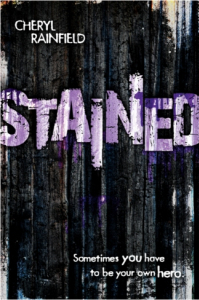
Houghton Mifflin Harcourt Books for Young Readers, October 2013.
I want to arm teens with the knowledge that if they’re in pain—if they’ve been abused, bullied, faced homophobia or racism or sexism, if they’ve hurt themselves or are in so much pain that they want to die—they are not alone, and things can get better. I want them to know that there are other people out there who understand them, who’ve been where they’ve been, who’ve survived and who are glad they did. I want them to find compassion and safety in a book—sometimes the only source they’ll find as a teen. And that’s what I do through my books. Yet some people have tried to remove SCARS from libraries or tried to convince others not to let their kids read it. STAINED hasn’t come out yet—it releases Oct 1—but since it also deals with some painful subjects in a real and emotional way, I think it will also face some book challenges. And yet books like the ones I write, and many other authors write, are so needed.
Every 9 minutes, someone in the US is sexually assaulted.1 1 in 6 are female and 1 in 33 are male, and 44% are under the age of 182—and that’s just who’s reported it. 93% of child and teen sexual assault victims know their attacker.3 Approximately 15% of teens in the US self-harm.4 1 in 5 teens in the US were bullied in school or cyberbullied.5 For children and teens aged 10-24, suicide is the 3rd leading cause of death.6 LGBT teens are 8.5 times more likely to attempt suicide because of homophobia.7 Clearly a lot of teens are going through rough times, and need support, understanding, and validation. For teens who are being abused at home or whose parents are not supportive, many won’t find the safety and support they need except through books. When teens do have safety at home, books can be a way to open up discussion.
Books can be a lifeline for teens who’ve been through trauma or hard times, and they can be a source of greater understanding of a friend or classmate for those who haven’t been through such experiences. They can help readers mentally prepare for events before they happen, help them realize they have more choices than they thought they did, and help give them hope and encourage healing.
In STAINED (out Oct 1), Sarah, a teen with a port-wine stain and body image issues, is abducted and must find a way to rescue herself. I drew on some of my own experiences to write it. I think even if a reader hasn’t been through any of the traumatic things that Sarah has—bullying, abduction, rape, being withheld food and water, having her life threatened—they will take away the most powerful message in the book: Sometimes you have to be the one to save yourself. It’s what I had to do, over and over, to escape the abuse and torture I was living, and it’s what so many teens have to do in big and small ways. And I think many teens will identify with and understand the body image issues, bullying, and rape that Sarah experiences—and learn from her healing journey as she reclaims herself. Readers who haven’t been through any of those experiences will find a greater appreciation for what they have.
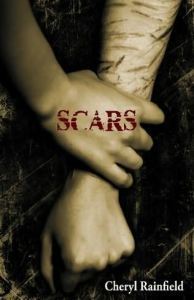
WestSide Books, Paperback Edition, May 2011.
Books save lives. I know this on a deep level. I couldn’t have survived all the abuse and torture I did without the validation AND the escape that books gave me. And, even three years after SCARS was published, I still get reader letters every week from teens telling me that because of SCARS they got help, stopped cutting, felt less alone, felt understood for the first time—or kept from killing themselves. I also still get letters from readers who haven’t been through sexual abuse or self-harm and aren’t queer, but who have more compassion for those who do—including, sometimes, their own children. Books are powerful tools to increase compassion and empathy and help readers know they’re not alone.
So I worry—and I get angry—whenever someone wants to keep books from readers just because they didn’t like or understand a book, or somehow found it frightening or triggering of their own issues. If you don’t like a book, or you don’t want your child to read it, that’s fine. That’s your choice. But don’t try to prevent others from reading books that can literally save lives. Don’t take away what, for some teens, can be the difference between suicide or choosing life.
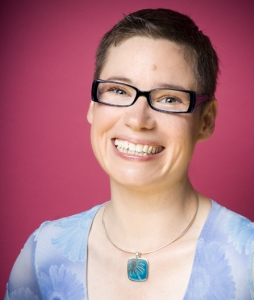
Cheryl Rainfield.
Cheryl Rainfield is the author of the novels SCARS, HUNTED and STAINED. A survivor of abuse, she often draws upon her own experience in her intense and highly charged fiction, heralding the strength and courage of ordinary people. She lives in Toronto, Canada. Visit her website at www.cherylrainfield.com.
RAINN (Rape, Abuse, and Incest National Network). http://www.rainn.org/get-information/statistics/frequency-of-sexual-assaultRAINN (Rape, Abuse and Incest National Network) http://www.rainn.org/get-information/statistics/sexual-assault-victimsRAINN (Rape, Abuse and Incest National Network) http://www.rainn.org/get-information/statistics/sexual-assault-victims“Nonsuicidal Self-Injury: A Review of Current Research for Family Medicine and Primary Care Physicians” by Patrick L. Kerr, PhD, Jennifer J. Muehlenkamp, PhD and James M. Turner, DO http://www.jabfm.org/content/23/2/240.full“October 2011: Bullying and Adolescent Health,” US Department of Health and Human Services http://www.hhs.gov/ash/oah/news/e-updates/eupdate-7.html“Suicide Prevention: Youth Suicide,” Centers for Disease Control and Prevention http://www.cdc.gov/violenceprevention/pub/youth_suicide.html“Study: Tolerance Can Lower Gay Kids’ Suicide Risk” by Joseph Shapiro, 2008, NPR http://www.npr.org/templates/story/story.php?storyId=98782569





September 15, 2013
Banned Books Month: Guest Post from Betsy Bird: Gatekeeping and Censorship for the Modern Metropolitan Children’s Librarian
Here’s the thing about New York City. Censorship? Not what I was expecting.
I got my library degree at The College of St. Catherine in St. Paul, MN. It was an excellent program and roundabout the time I figured out that it was children’s librarianship I wanted to go into (my propensity for accidentally destroying books did not exactly make me an ideal candidate for my first choice: conservator) my course was set. I took all the requisite classes. I learned all the important information. And as with any top notch children’s program, I was told about censorship.
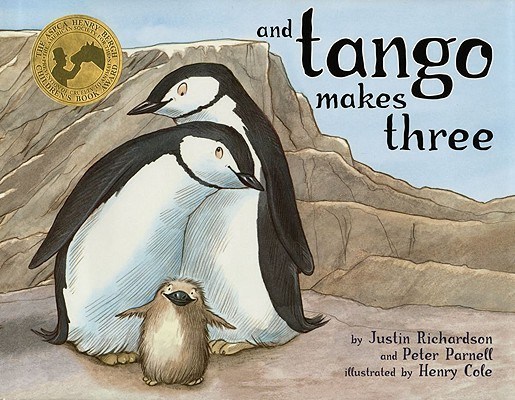
Simon & Schuster Books for Young Readers, June 2005.
Library schools teach incipient librarians about censorship the same way I imagine troops were taught about VDs during WWII. There are charts. There are graphs. And there are in-depth talks on methods that will help you handle the situation. We learned preventative measures, like having a Collection Development Policy in place so that it could be whipped out at a moment’s notice. We learned about talking to the patrons, and really hearing their concerns. People who censor aren’t bad people. They just have worries, and sometimes they’re completely valid. That copy of THE GIRL WITH THE DRAGON TATTOO that accidentally got labeled JUV FIC? Thanks for telling me about it! For those patrons with true banning on their minds, you have a challenge form you can give them. They fill it out and then it gets reviewed and there’s a whole system in place to make them feel like they’ve been heard and respected. Even if/when their desires to remove AND TANGO MAKES THREE is ultimately rejected, they’ll feel like they weren’t ignored. And that’s a good thing.
So basically I was pumped. I was ready. I was gonna be prepared to take on the world. Minnesota, lovely place that it is, wasn’t exactly hiring any librarians when I graduated (the jobs are so delightful that children’s librarians in that part of the country hold onto them with both hands until they DIE!) so off to New York City I went.
I received my first children’s librarian position. My dreams were realized in full when they handed me a gorgeous room of my very own, to do with as I pleased. And with the eagerness of a unvarnished newbie I asked, “What kind of censorship issues have you faced here?” My new boss smiled in a confused fashion and came this close to patting me on the head. ”We don’t really have that problem in New York,” he said. Then he walked away.
Turns out that’s not strictly true. While NYC doesn’t face the same kind of challenges you might find in smaller cities, it does happen from time to time. The difference is that in NYC the attempts aren’t usually to ban. They’re to redefine. Someone thinks a middle grade book should be in the YA section or, at times, the adult. It happens. It’s taken seriously too.
And occasionally there are people who walk in off the street and demand that books be removed. Of course there are. My favorite story on this subject once came from a fellow children’s librarian working in a fairly upscale branch. A woman walked in and started systematically picking out titles. My friend didn’t think much of it until the woman had a huge stack in her arms. She then walked over to the reference desk and put them down.
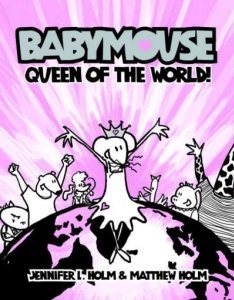
Random House Books for Young Readers, December 2005.
“These books are about mice,” she said. My friend looked and confirmed that yes, indeed, that is what they were about. The stack included BABYMOUSE and THE MOUSE AND THE MOTORCYCLE and MOUSE PAINT amongst others.
“Mice are disgusting vermin. No child should ever learn that they’re cute.”
As my friend put it, she then stood there, arms crossed. ”As if she expected me to produce a can of kerosene and a match and light them on fire right there on the desk.”
It is critical to note, however, that while she made a bit of a fuss, the woman had no interest in lodging a formal complain. And therein lies the difference.
I worked the reference desks of NYPL for seven years and in that time I personally never got a single chance to use the knowledge I’d so carefully memorized and internalized in my library school days. Each time I’d hear a story about somebody like the anti-mouse woman or the folks on Staten Island that hated A.L.I.E.E.E.N. my heart would quicken and I’d wonder if I would be the next person to face an angry patron. I wasn’t. Meanwhile around the country I read about challenges, bannings, and acts of madness that I’d never personally face. As recently as September 10th the author Meg Medina was uninvited from a school appearance because of the title of her YA book: YAQUI DELGADO WANTS TO KICK YOUR ASS. One suspects that had the title been YAQUI DELGADO WANNTS TO RIP OUT YOUR FINGERNAILS or YAQUI DELGADO WANTS TO REMOVER YOUR SPINE WITH HIS TEETH, no one would have blinked so much as an eye.
What’s important for me is to remember that these things are happening all the time. They may not be happening to me. They may not be happening to anyone I know personally. But unless I keep my eyes open and pay attention, I could easily float about my days unaware that this is happening to anyone else. And THAT is the real danger here.
The skills I learned in library school have been completely wasted. I’ve never been so grateful for anything in my life.
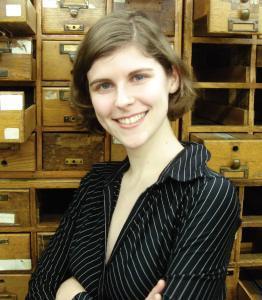
Betsy Bird. (Photo by Sarah Hampton.)
Betsy Bird is a children’s librarian and popular blogger for School Library Journal. She has also served on the Newbery Medal committee and written for The Horn Book. This is her first book. She lives in New York City. You can visit her online at blog.schoollibraryjournal.com/afuse8production.





September 14, 2013
Banned Books Month: Guest Post from Julie Ann Lindsey: Change the World
When I was asked to write a post for Banned Book Week, I wasn’t sure where to begin. I decided to reread some of my favorites and see if a specific topic came to mind. I expected I’d write about the importance of freedom of speech or maybe the rich heritage immortalize on the pages of our most cherished literature. My mind always drifts to the older books, challenged for a century in one way or another, like LADY CHATTERLY’S LOVER, or LEAVES OF GRASS. There’s something beautiful about reading the story of another time, written by an author who lived it, not from the perspective of a student of history, but from a citizen of the era. That was what I’d expected to write about. I was wrong.
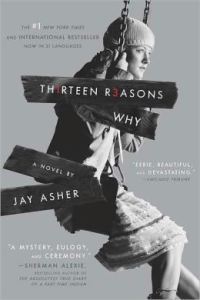
Razorbill, Reprint Edition, June 2011.
I went to my bookcase and ran a finger over the young adult shelves first. So many banned books are written for teens and so many well-meaning (I suppose) adults challenge those titles in the name of protecting the children. Sad. I have them all. Something about banning them makes me need to know why. I want to see what scared someone enough to file a complaint. People interest me like that. I probably spend far too much time wondering why people do things. It’s a horrible pass time because I will never know the answers. Wondering is futile, but it’s what I do. I also take frequent bunny trails, like this one. Okay, on top of the ever-growing to-be-read pile beside my bookcase, I found THIRTEEN REASONS WHY by Jay Asher. I’ve meant to read this one for ages, but life is busy and I’m easily distracted, so it lay on my stack of books, waiting for someone to ask me to write this post. I believe in serendipity, but I never anticipated the impact it would have this time.
THIRTEEN REASONS WHY was the only book I read before writing this post. I mourned for days as I devoured and contemplated the messages on Asher’s pages. I knew before I finished reading what message I wanted to send: Books are life rafts and no one should decide who gets to be saved.
I cried with the girl who took her life in the story. I mourned for her and for all the others who choose her path. Then, I cried for me. I was shocked to discover I had the same experiences as this character, in one form or another. The names were changed and I lived the events long before this character was born, but everything else was the same. I felt the way she felt and I thoughtthe things she thought. I wanted to quit. To stop. To die. I, too, wondered if anyone would notice. If they’d care. If I mattered. How many others feel this way, too? I’m guessing many more than we will ever know. As I turned each page, I itched to reach into the story and help this fictional girl. I wanted to find a hotline where I could volunteer. I wanted to travel back in time and help Teen Me see beyond the tragicmoments. Most of all, I wanted to understand why people challenge this book when there was so much to learn. Like, if you hold on a little longer, all of the awful will pass. If you hold on, if you give it time, it will pass. It will.
When I read this book, I see hope. I see potential to spread the message that things get better. Every moment passes, good and bad. The moments we want to live in forever and the ones that make us want to die. They all go away. They change. We change. The world changes. This book doesn’t glorify suicide or whatever other asinine complaint was filed against it. This book says, “I’m here. I get it.” People need to know they aren’t alone, even if the only other person who understands them is across the planet. They aren’t alone.That is hope, my friend, and hope is powerful.
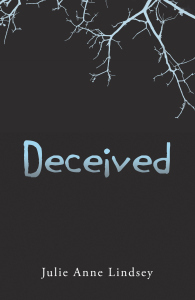
Merit Press, December 2013.
I hope everyone will read a banned book this week.Pick one up you’ve meant to read but haven’t gotten to yet. Reread a favorite and remember all the reasons it moves you. The messages in these books are powerful and sometimes scary, but necessary. It’s the truth in the stories that frightens people, but it’s okay to be afraid. We should be afraid. I’m terrified a teen in my life, neighborhood or community thinks there’s only one answer left to their desperation. I’m so moved by THIRTEEN REASONS WHY, I bought half a dozen copies to pass out during Banned Books Week. I will do my part to share this story with teens in my life, at church, babysitters and neighbors. If my life was once so similar to this character written decades later, how many teens do I know who feel this way too? If it’s more than zero, then it’s too many, and if they won’t talk about it, maybe reading about it will change their path, or incite them to extend a hand to someone they see slipping away. Like so many books on my shelf, this one has changed me and I’m a better woman for it. Banned books can change lives. Change the future. Change the world. Share one with someone you love.
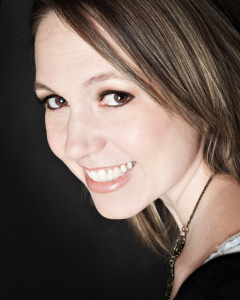
Julie Ann Lindsey.
The mother of three young children, Julie Anne Lindsey is a full-time writer with an established track record in lighthearted romance novels. DECEIVED is her first adventure into young adult suspense. Check out the trailer and follow Merit Press on twitter and facebook!
Julie is a member of the Society of Children’s Book Writers & Illustrators (SCBWI), International Thriller Writers (ITW), Sisters in Crime (SinC) and the Canton Writer’s Guild.
You can find Julie blogging about the writer life at Musings from the Slush Pile or @JulieALindsey.





September 13, 2013
Banned Books Month: Guest Post from Laura Lam: My Book Hasn’t Been Banned, but it’s Been Unintentionally Censored
PANTOMIME hasn’t been officially banned, but there’s a possibility it could be.
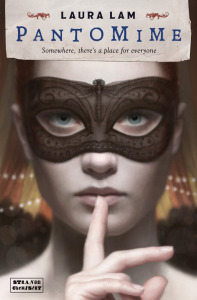
Strange Chemistry, February 2013.
My debut YA fantasy features an intersex protagonist, Micah Grey. Raised as the daughter of a noble family named Gene, when it comes to light what Gene’s parents plan to do, she runs away from home and joins the circus as a male trainee trapeze artist. It’s a coming of age story with romance, as well as a fantasy set in a pseudo-Victorian world.
So far, PANTOMIME has only had one or two homophobic reviews that I’ve seen, and even so, they’ve been pretty mild. I haven’t received any hate mail. No one has petitioned to have it removed for a school or library (as far as I know). However, I have observed something a little subtler, but in a way just as problematic: A few librarians that have read it have stated they wouldn’t buy it for their library because they’re not sure how their children would take it. One worried that her students wouldn’t be mature enough to deal with its LGBT themes. When I saw that, I felt so very sad. I wanted to ask: But what about your LGBT students? Because, of course, there will be some.
I didn’t comment, because even though it’s my book, it’s not my place. I’ve seen too many author/reader blow-ups. But I thought I’d write a general post on my feelings of the subject here, without naming names.
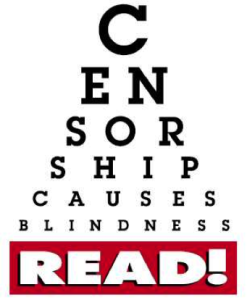
Can you see censorship?
Thinking like that is dangerous for several reasons. One, it’s censorship. Even if the people who read it loved the book, they shied away from putting it in a position where perhaps the book could become banned. They didn’t want to deal with any potential parent complaints that may or may not arise. If parents complained, maybe they’d have to discuss it with their line managers. It’s easier not to court controversy. And it’s easy to fall into that line of thinking, without realising that it is censorship.
Some teens can be immature about LGBT themes. They throw the words “gay” and “fag” around as an insult without any thought as to how those words can hurt people. Some teens do the same with racial slurs. But the best way to combat that is to expose them to it, have them read a book and put themselves in someone else’s shoes. Not keeping it away from them. If their beliefs are never challenged, then how can they change?
As a teen, I was a depressed and lonely, and I escaped from the world through books. It was very easy to find myself in fiction as a white, cis-gendered girl. They were always off having adventures, falling in love, having happy endings. But queer characters? Characters from different cultures and abilities? They’re a lot harder to find in fiction. And if I already felt isolated in the real world, to then feel isolated and not find myself in fiction would have been very difficult. That’s one of the reasons I wrote PANTOMIME.
PANTOMIME underwent some mild online controversy because people feel the blurb is misleading. It makes it seem like Gene and Micah are two different people. And I know that’s problematic, but see why people have been upset by that. But we do live in a world where booksellers of national chains will see a book has a LGBT protagonist and take fewer copies, evidently. And that means fewer copies to go into the hands of people who would have zero problem reading about someone of a different sexual orientation to themselves, or who are desperately hunting for more books with characters of the same sexual orientation as they are.
So I haven’t been banned. But I have been censored. Only twice that I know of, but who knows how many others have picked it up, realized it’s about an intersex character, and decided not to carry it in a bookstore, a library, or a school? I’ll never know. How many other books with potentially contentious content have undergone the same treatment? But I have to hope that PANTOMIME and other books that feature diverse characters, can have a wide enough reach so that the teens who really need it can find it. It’s not about the librarians. It’s not about the parents.
It’s about the teens.

Laura Lam.
Laura Lam was raised near San Francisco, California, by two former Haight-Ashbury hippies. Both of them encouraged her to finger-paint to her heart’s desire, color outside of the lines, and consider the library a second home. This led to an overabundance of daydreams.
She relocated to Scotland to be with her husband, whom she met on the internet when he insulted her taste in books. She almost blocked him but is glad she didn’t. At times she misses the sunshine.
PANTOMIME was released February 2013 through Strange Chemistry, the YA imprint of Angry Robot Books. The sequel, SHADOWPLAY, will follow in January 2014.
She can be found on her website, Facebook, Twitter, Goodreads, and Pinterest (not that she uses social media as a procrastination tool, or anything…).





September 12, 2013
Banned Books Month: Guest Post from Jen McConnel: I Read Banned Books
My name is Jen, and I read banned books.
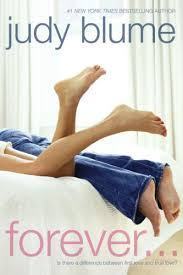
Simon Pulse, Reissue Edition, April 2007.
There are so many amazing banned and challenged books which have made an impact on me, but today I want to share a particular story. It centers on Judy Blume’s novel FOREVER, my girlfriends, and my mom’s sock drawer.
Long before my friends or I had managed to snag boyfriends, we were fascinated by love and (gulp) sex. Because our magazines told us to, we spent hours discussing the things we thought would make a relationship worthwhile, and we spoke in whispers about French kissing, foreplay, and birth control without really knowing what we were saying.
And then, in 8th grade, one of my friends stole a little book from her older sister, and everything changed.
When FOREVER first surfaced in my life, it was a battered copy that had already made the rounds of another set of teenage girls a few years before. Luckily, my friend’s sister had kept her copy, even as she went from book knowledge to practical application, and my friend had no qualms about swiping the book. We read it one at a time, and fast, passing it on to the next girl after attempting to memorize the steamy scenes, and at our next slumber party, we had lots to discuss. The book gave us a window to adulthood that we hadn’t found in our bright pink magazines, and the story of first love and first sexual encounters answered far more questions for us than we’d even known to ask in our small, rural Midwestern town.
We must have read that book from cover to cover a hundred times, trying to glean more wisdom, and attempting to puzzle out some of the sexual descriptions we still didn’t entirely understand. FOREVER probably would have remained our cherished handbook for years if I hadn’t blown our cover.
I’d always had a good relationship with my mom growing up (still do, thankfully), and I finally asked her about some of the things I’d read about in Blume’s novel. She didn’t react well to her young daughter asking her to define sexual slang, and she pressed me to tell her where I’d learned those things. The story of the novel tumbled out, and my mom immediately demanded that I surrender the copy. It didn’t occur to me to lie about having the book, although I tried to point out that the book wasn’t actually mine, but she didn’t care. She took it and forbid me from reading it, and she buried the novel in her sock drawer.
It remained there throughout high school, and whenever she wasn’t home, I snuck into her room to re-read the juicy passages, puzzling out the things that had confused me when I was younger. Later on, in college, I had the chance to buy a new copy of the book for a literature class, and re-reading it, I realized how much more was actually going on in the novel besides sex. Women’s rights, sexual identity, and suicide are all addressed in this slender novel, and the book is as resonant today as when it was first written in the 1970s.
Now, I don’t want you to get the wrong idea about my mom after hearing this story. She’s a pretty open-minded person, and this was the only time in my life she’d ever told me not to read something. But her reaction underscores the importance of banned and challenged books: often, these books broach topics that people aren’t comfortable discussing. Even if the world around us doesn’t want to have a dialogue about sexual choices, books like FOREVER offer readers the chance to explore, question, and develop their own opinions about sexuality. Blume presents a safe, consensual sexual relationship in emotional and physical detail, and that’s something more teens need to be exposed to before they begin experimenting and discovering their own turn-ons.
Maybe, if we talked more about the tough subject they wouldn’t be so troubling, and maybe if we were more open with girls (and boys) about sexuality as they grow up, there wouldn’t be so many traumatic sexual experiences lurking in our memories. I’m just guessing, but banned and challenged books offer dialogue and inquiry into the tough topics, and that’s important for readers of all ages.
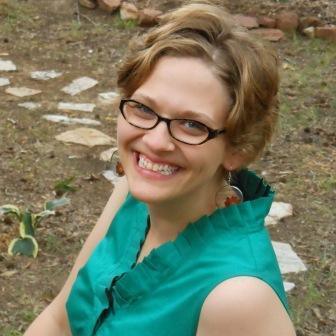
Jen McConnel.
Jen McConnel first began writing poetry as a child. Since then, her words have appeared in a variety of magazines and journals, including Sagewoman, PanGaia, and The Storyteller (where she won the people’s choice 3rd place award for her poem, “Luna”).
She is also a former reviewer for Voices of Youth Advocates (VOYA), and proud member of SCBWI, NCWN, and SCWW.
A Michigander by birth, she now lives and writes in the beautiful state of North Carolina. When she isn’t crafting worlds of fiction, she teaches writing composition at a community college. Once upon a time, she was a middle school teacher, a librarian, and a bookseller, but those are stories for another time.
Connect with Jen on Twitter @Jen_McConnel, and visit her website to learn more. http://www.jenmcconnel.com/





September 11, 2013
Banned Books Month: Guest Post from Cassandra Rose Clark (THE ASSASSIN’S CURSE): I’m Glad I Read Waldo
I grew up the daughter of a librarian. We actually only had one bookshelf in our house, because my mother understood that we had access to hundreds of bookshelves down at the local library. Moreover, my mom pretty much gave me free reign over anything I wanted to read. If it was printed, I could read it, and the idea that kids couldn’t read a particular book, whether because of institutional or parental restrictions, was a pretty mind-blowing concept when I first encountered it in those magical years of my elementary school education.
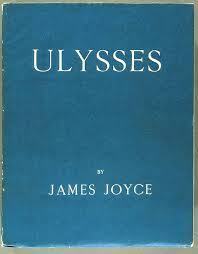
Dover Publications, Unabridged Edition, November 2009.
Even now as an adult, whenever I learn that a book has been banned (or even challenged), there’s still that moment of disconnect: What? People do that? But of course I know they do. The reasons run the gamut, from conservative to liberal and back again—the idea that the political spectrum is a circle, not a line, is never more clear than when you’re looking at the reasons books get banned.
Let’s start with a book that was banned by the US government back in the the 1920s, so thoroughly that, according to Wikipedia at least, the US Postal Service burned copies of it: ULYSSES by James Joyce.
“What!” you cry. “How could ULYSSES be banned! It’s a classic! And no one understands what it’s talking about anyway!”
These things are true (mostly). ULYSSES was actually banned for a particular chapter, Nausicaa. Originally ULYSSES was serialized for a US magazine called The Little Review. When the magazine published Nausicaa, it was brought up on obscenity charges.
I read ULYSSES in college. All the way through, from beginning to end. The only reason I was able to understand the vast majority of it was because I looked up the Sparknotes summaries after I read each chapter. And imagine my delight when I stumbled across this in the summary for “Nausicaa:”
“At the climax of the episode and Gerty’s emotions (and Bloom’s own orgasmic climax, we soon realize) the Roman candle bursts in the air, to cries of “O! O!” on the ground.”
That’s right, “Nausicaa” is an entire chapter about masturbation. Joyce never comes out and says it—the way the text is written merely suggests the experience. Years later, the “Nausicaa” chapter was the only one I remembered in any detail. This summer, as I was preparing to teach a British literature survey course, I found that “Nausicaa” had been selected as the ULYSSES excerpt in the textbook, along with the testimony from the 1930s that eventually led to the obscenity charges being dropped.
You can bet I slapped that reading on my syllabus faster than you can say yes I said yes I will Yes.
But not all banned books have the illustrious and titillating history of ULYSSES. In fact, in what comes as a shock to no one, many of them are children’s books. While scanning through the ALA’s list of most challenged books, I came across a few surprises.
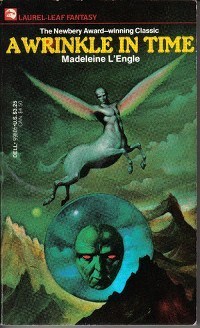
Bantam Books, Mass Market Edition, October 1988.
The first was A WRINKLE IN TIME by Madeleine L’Engle. Now this is one of my favorite books ever. I read it at the exact right age (about thirteen or so) and at my junior high, reading it actually became a fad, like those slap bracelets. I couldn’t imagine anyone banning it. Obviously I don’t support banning books for any reason, but with some texts (like ULYSSES) you can at least kinda-sorta see where people are coming from. But A WRINKLE IN TIME?
So I went digging. According to Banned Books Awareness, A WRINKLE IN TIME has been banned for being “too Christian [and] not Christian enough.”
This will always be the problem with banning books. Fiction, like all art, is audience-dependent in the sense that the reader brings themselves to whatever they’re reading. The story acts like a mirror, reflecting back the things we want to find. If we see something we don’t like, there’s a gut reaction to make it go away forever. But the fact that a book can be banned for being both too much and too little of something shows just how subjective our perceptions are. And when those bans are successful, we prevent others from having the same opportunity to look within a story and see their own reflection.
Another frequently challenged book is Where’s Waldo? by Martin Handford. You remember WHERE’S WALDO? (WHERE’S WALLY? if you’re in the UK). You spend hours scanning crowd scenes looking for a dork in a red-and-white striped outfit. WALDO was basically an emblem of my childhood. So I was shocked to find out that the first Where’s Waldo? Book was frequently banned and challenged during the nineties. Why?
The answer’s simple: sideboob. In a crowded beach scene, there’s an image of woman bathing topless and you can see a bit of sideboob, with the tiniest hint of a nipple. Here’s the image if you’re curious. It’s tiny and hardly noticeable, but it is there, and that was enough.
Honestly, this reminds me of the rumors about certain Disney movies from when I was kid, about how you could see “suggestive” things that had been drawn in by the animators. One that I actually spotted myself (and which was mysteriously erased when Disney released the film last year) was the word “sex” appearing in a glittering dust cloud during the Lion King:
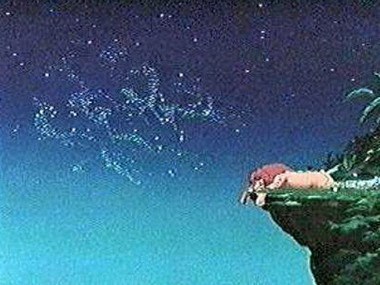
The Lion King: What do you see?
Did I see it because it was there or because someone told me about it? Dunno. It was enough to make the rumor circuit and get people all in a tizzy, just like the sideboob in WHERE’S WALDO? Which is sad, because both sex and sideboobs are a normal part of the human experience. Why do we try to pretend to children that they don’t exist?
I’d try to argue that we’re much more fervent about shielding children from sex than we are about shielding them from violence, but that would be disingenuous of me, since the next two series I want to talk about have both been challenged for violent and disturbing content.
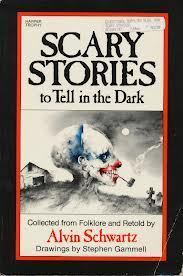
Scholastic Inc, 1989.
I’m speaking, of course, about the SCARY STORIES series by Alvin Schwartz and the GOOSEBUMPS series by RL Stine.
If you have any memories of the 90’s you’ll probably remember these. The SCARY STORY books collected terrifying/gross folk tales and urban legends and paired them with some of the creepiest illustrations I’ve ever seen. GOOSEBUMPS was a series of a middle grade horror stories with titles like NIGHT OF THE LIVING DUMMY, REVENGE OF THE LAWN GNOMES, and MONSTER BLOOD II. They’ve actually been revived through some publisher’s magic which means your little nieces and nephews are probably swapping them on the school playground as you read this.
Unlike WHERE’S WALDO? and A WRINKLE IN TIME, I expected GOOSEBUMPS and SCARY STORIES to be on the list. This was not the case when I was a kid, of course: In fact, my first experience with banned books came when I learned that many schools and parents were uncomfortable with the Scary Stories books. I couldn’t comprehend it. SCARY STORIES? But those books are awesome!
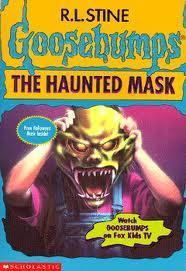
Scholastic Inc, September 1993.
Now, though, as an adult, I do get it. Violence didn’t bother me so much when I was a child because I didn’t fully understand that it was something that could actually happen. Now I do. And so when faced with a children’s story that involves cannibalizing human beings for sausage my immediate reaction is, yes, to try and snatch the book away and get it as far from kids as possible.
But then I remember the first time I heard that sausage story. I was in third grade. A boy named Christopher read it aloud with devilish glee during learning stations. I had a moment of pure terror and revulsion before giggling about it with him afterwards, both of us secure in the knowledge that we were safe.
Years later I had an experience that engendered those same feelings of revulsion, only this time it wasn’t because of a story, but because of real life. It’s trite to say that the moment with Christopher prepared me for what happened—nothing could do that—but I’d still received a sort of inoculation against the horrors of the world.
I’m glad I read those SCARY STORIES books as a child. I’m glad I read GOOSEBUMPS and A WRINKLE IN TIME and ULYSSES, glad I spent hours trying to find WALDO. Every single one of those books added something to my life, some big and some small. If they’d been taken away from me, who knows what I would have missed?
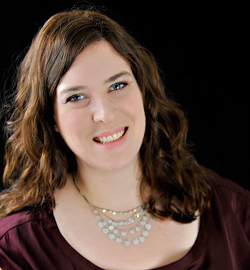
Cassandra Rose Clarke.
Cassandra Rose Clarke grew up in south Texas and currently lives in a suburb of Houston, where she writes and teaches composition at a local college. She graduated in 2006 from The University of St. Thomas with a B.A. in English, and two years later she completed her master’s degree in creative writing at The University of Texas at Austin. In 2010 she attended the Clarion West Writer’s Workshop in Seattle, where she was a recipient of the Susan C. Petrey Clarion Scholarship Fund.
Cassandra’s first novel, THE ASSASSIN’S CURSE, received a starred review from Kirkus and was nominated for YALSA’s 2014 Best Fiction for Young Adults. Her short fiction has appeared in Strange Horizons and Daily Science Fiction. At any given time she is working on a novel.





September 10, 2013
Banned Books Month: Guest Post from Amy Rose Capetta: This Is Why We Can’t Have Nice Things — On the Banning of Sex-Positive YA Novels
As an author whose debut novel comes out in October, I’ve never had a book challenged or banned, for obvious reasons. But when I think about the books that I’ve read and loved that have been widely challenged, and the places where they intersect with stories I’ve written and hope to write, I see a trend that makes my nerves curl up at the edges.
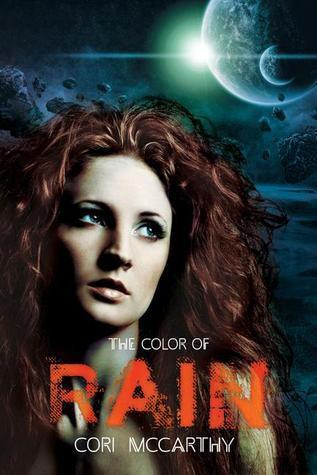
Running Press Kids, May 2013.
The number one reason listed, by the American Library Association, for books being challenged in the last twenty years is this: “Sexually explicit.” This means that any book containing a sex scene is likely to come under some amount of scrutiny, if not direct fire.
This holds double-true in YA, where the age of the audience plays a factor in how often books are challenged or banned. The “sex sells” maxim found elsewhere in entertainment doesn’t apply here: the inclusion of an actual sex scene will almost invariably keep a YA novel out of certain libraries and bookstores, and therefore the hands of certain readers.
Stories where the plot centers around negative instances of sex can range from trauma (Laurie Halse Anderson’s SPEAK), to abuse (Margo Lanagan’s TENDER MORSELS), to sex trafficking (Cori McCarthy’s THE COLOR OF RAIN). These books risk being banned, but there is also a large and wonderful contingent of people who fight to remind people that the issues put forth here are important, that they need to be reflected and dealt with in fiction.
But what happens when books portray teenage sexuality in a positive light?
When a book includes a positive sexual experience, sometimes it is central to the novel—as in Judy Blume’s much-banned, very-before-its-time FOREVER. But often the sexual relationship is one aspect of the novel, and therefore seen as something that can be “safely left out.”
But I can’t help but wonder: if we ban stories that show teenage sexuality, especially that of girls, in a positive light, aren’t we adding one more stick to the ever-growing bonfire of reasons for them to see that sexuality as something they will either use or be used for, rather than something to be understood?

Simon Pulse, Reissue Edition, April 2007.
I don’t write books with a message, and I don’t enjoy reading that sort of book, either, so it might seem counterintuitive to tackle this subject. But a large part of why books are so important is because they treat the parts of a character’s life, including sex, as experience rather than agenda. No matter how positive, the relationships in most YA books aren’t perfect. They have complexities, and yes, consequence.
YA novels also give context in a world where the sexuality of teenage girls (and to a lesser but still notable extent, boys) is used as a provocation or a selling point. They offer a sense of worth in a society that is largely defined by the experiences and desires of adult men. As a teenage girl, I read an absurd amount about the sex lives of middle-aged men. That’s who wrote the classics. I was also treated to their point of view in a disproportionate amount of film, television, and other art forms. But as a teenager today, I would have had more than a dog-eared handful of proto-YA books to balance that. I’ve seen readers eagerly latch on to the relationships in YA novels, and I think part of that excitement comes from the reflection of a real variety of sexual expression.
As a teenage girl, I was drawn to books like Judy Blume’s. I didn’t confuse being ready to read about sex with being ready to have it. I needed that safe space where I could follow what happened to characters I cared about, and figure things out for myself.
As a writer, when I come to a sex scene, I weigh every choice, down to the word. The one thing I don’t weigh is whether or not to include it. I won’t be the person who tells teenage girls that sex is something that happens to them—that their feelings about it can be safely left out.
[image error]Amy Rose Capetta holds an MFA in Writing for Children & Young Adults from Vermont College of Fine Arts. She has a particle-level love of mind-bending science and all sorts of music. She adores her small patch of universe, but also looks intently at the stars. ENTANGLED is her first book with Houghton Mifflin Harcourt Books for Young Readers.





September 9, 2013
Banned Books Month: Guest Post from Bryony Pearce: Hiding the controversy
I’ll admit it: although you may not realise it, I write “issues” fiction. There are reasons that you may not realise it. Here are a handful of reviews about THE WEIGHT OF SOULS:
“It grips you from the first page … This book is just the right side of supernatural meets mystery with just enough pinch of romance in to keep a romance-junkie like me happy.”
“THE WEIGHT OF SOULS hooked me from “jump” and proved to be quite the page-turner with an incredible blend of action, teen characterization, and nicely woven romance arc between two most Unlikely characters. And Anubis.”
Egmont UK, June 2012.
And ANGEL’S FURY:
“Gripping book from start to finish. Very clever story, told in an exciting and at times nail-biting way. Thoroughly recommend.”
“Bryony Pearce gives us a supernatural thriller with touches of historical fiction and a dash of romance.”
My reviews talk about how I write gripping stories; they mention the supernatural elements, the romance, the action. Rarely do they mention the ‘issues’ and that is fine with me; they’re meant to be hidden.
Traditional “issues” fiction such as Jennifer Brown’s wonderful HATE LIST have reviews that say things like “powerful,” “emotionally draining” and “an awful subject that is handled sensitively.”
When I think of issues fiction I think of books like Dave Cousins’ 15 DAYS WITHOUT A HEAD, or the aforementioned HATE LIST, MY SISTER’S KEEPER or JUNK (retitled SMACK in the US). These books are page turners, certainly, but to me they are too powerful, too emotionally draining; I often have to stop reading them, just to have a think. Sometimes I have to step away from the book completely and give myself some time. When the book is finished the “issue” is what I remember most about it. And that is brilliant. These books teach on a very conscious level, engender discussion and the best of them can even bring about social change.
That however, is not what I want to do. I want teenagers to read my books and go away thinking about the characters, the story, the “cool” supernatural stuff. The issue I’ve really written about, well, it might just sink in without them realising it was even there.
ANGEL’S FURY was about what people will do to other people, about man-as-monster. I researched Milgram’s obedience to authority experiment (I have a great version that I use during school visits). I looked closely at Nazism; I researched Hitler’s rise to power and the Hitler Youth. I tried to comprehend how the things that happened in Germany might have occurred and I drew myself a character who was a hateful Nazi, who somehow turns out to have redeeming features. I hid all of that in a story about fallen angels and reincarnation, a supernatural love story / paranormal thriller. In doing so I was being controversial in a different way. My editor worried that this was the first book that has dealt with the second world war without being about the second world war; the first book that has ‘used’ the murder of a group of Jews without being ‘about’ the murder. She worried that I was going to be accused of treating the issue too lightly. She need not have worried, ANGEL’S FURY has won two awards and been long-listed for others.
My second novel, THE WEIGHT OF SOULS is secretly about bullying. It is about fitting in and the stupid stuff that we do when we’re trying to belong. I researched deindividuation theory and dove into my own history of being tormented at school and my memories of other children who suffered even more; a boy in my class so terrified of walking home alone that he used to hide a brick in his school bag.
Strange Chemistry, August 2013.
Bullying is a subject that has always interested me. I have been bullied in various ways; I was an RAF kid and in every new place there was at least one group who took against me. I’ve been called a gypsy, a gorilla, a rock cake (insulting term for a Roman Catholic), frigid, a whore, a slut. I’ve had food rubbed in my hair, I’ve been buried in a sand pit, I’ve been sexually assaulted, I’ve been laid upon at the bus stop more than once, sometimes by more than one person at a time. I’ve been beaten up on the school bus, in the playground. To be fair I often gave as good as I got and occasionally threw the first punch. But the incident that really sticks in my mind, the incident that I secretly write about over and over again is the one that really hurt me.
When I was eleven or twelve I was pretty happy at school. My family had remained in the same place for three years by then and I had some good friends, I was doing well in lessons and I had overcome the crippling shyness that had been worrying parents and teachers alike. Then, as girls do, I fell out with my best friend.
My best friend was generally better liked than me, particularly by the boys (she was, shall we say, physically advanced for her age). So when the two of us fell out, to my surprise, instead of leaving us to sort it out between ourselves, the class took sides – her side. People that I had considered friends turned on me and I literally was forced to sit alone in a corner of the room for every lesson as they moved their things and sat elsewhere. The teacher never said anything. As the whole class chanted, ‘get out, get out, no-one wants you in here.’ She continued to say nothing.
Then the physical assaults started: kicks, knocks, subtle punches as classmates walked past. Finally I was attacked in the dinner queue, viciously punched by a boy who I’d had a crush on for ages. I was bruised on the outside, but devastated on the inside.
One girl noticed that I was done. When I was about to crumple in the face of the chanting she walked up to the teacher and said. “I don’t think Bryony should sit by herself anymore. I want her to sit at my table.”
Out of a class of almost thirty children, one girl had the integrity and the guts to stand up and gave me a life-line. One.
How was it that every child, bar one, was happy to join in with a chant that demanded a class mate leave the room, even though there was no way she would have been allowed to? How was it that these children felt comfortable escalating to physical violence? And how was it that the teacher never felt able to say a word?
Maybe I was just that disliked. Maybe the teacher secretly hated me…but maybe something else was going on.
Deindividuation says that we merge our identities with that of the group and become anonymous, that this allows us to lose our inhibitions. There is also something called Social Learning Theory which suggests that simply observing another’s actions can lead to a person learning that behaviour as long there is no punishment and a favourable outcome (the teacher never punished and the favourable outcome was the approval of the popular girl). I believe that I was at the centre of an inadvertent social experiment that showed, at least to me, how people can lose their personalities in a group.
So this is something I explore in all of my books: how a group of good people can become a group of howling monsters. In ANGEL’S FURY we have the Nazi party and in THE WEIGHT OF SOULS we find the V Club, they have a name (some members even tattoo it on themselves), they have a leader, posters, a salute. The club behaves in a way that outsiders would consider insane and their actions have escalated out of control. But none of them stop, none of them back out, when you’re in the V club you just “do what you do:” Deindividuation.
So, although it looks as if I write gripping page-turners about ghosts, gods, fallen angels, reincarnation and superheroes (my current WIP), I do actually write issues fiction. I have things that I want to explore and understand through my writing, but I don’t want to ram my conclusions down people’s throats. I just want readers to observe what I have done and to see what I have seen. To allow that to sink in quietly, I distract them with fallen angels, an army of zombified murderers, a few ghosts and an Egyptian God.
Writing issues fiction is scary. It is very easy for people to point and say I got it wrong, that it doesn’t apply or that I’ve caused offence. To those people I say; “What? Issues fiction? Are you mad, this is a book about ghosts.”
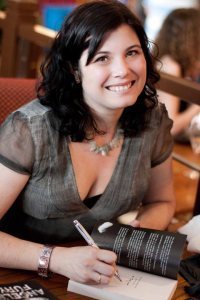
Bryony Pearce.
Bryony Pearce completed an English Literature degree at Corpus Christi College, Cambridge in 1998 and afterwards worked in the research industry. After a while she moved to a village at the edge of the Peak District and went freelance so she could devote more time to writing. She is now a full time mother to two children, writes as much as possible and enjoys doing school visits and events when she can fit them in. Her first book, the award winning ANGEL’S FURY, was published by Egmont UK in 2011 and released in the US in 2012.. Her latest, THE WEIGHT OF SOULS, was just released by Strange Chemistry. For more information on Bryony, please visit her at www.bryonypearce.co.uk, follow her on Twitter @BryonyPearce or like her Facebook page BryonyPearceAuthor.





September 8, 2013
Banned Books Month: Guest Post from Mindy McGinnis: When Rape Becomes a Bad Word
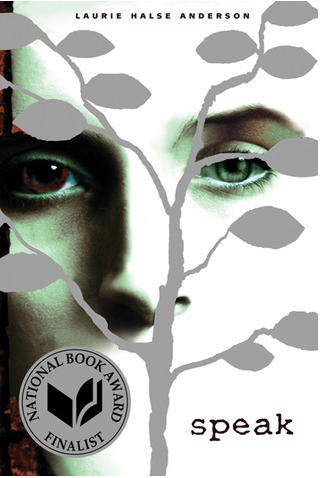
Squarefish, Reprint Edition, May 2011.
In addition to being a YA author, I’m also a librarian in a public high school. In that role I have carefully taped back together multiple much-loved copies of SPEAK by Laurie Halse Anderson. When a copy is so tattered that it can’t remain in circulation anymore, I toss it out on our plentiful Free Books table, and it quickly, quietly disappears despite its ragged condition. In my tiny high school that graduates under 100 students each year, we have 10 copies of SPEAK. Yet we can’t keep it on the shelves.
This is not only because it circulates widely, but also because I unfailingly have a few “walk away” from the library without being checked out. And I don’t mind. If a kid needs to read a book about rape but is too embarrassed to come up to the desk with it, I understand. I’ll buy another one.
But the fact that they don’t feel like they should be reading it, or even worse – that they’re ashamed to be reading it – bothers me greatly. In a sense, it’s directly in opposition to what the book is about. These girls (and boys!) shouldn’t feel awkward about wanting or needing to read an important book about a social condition. If it were about starvation, shop-lifting, or drinking, they wouldn’t respond in this way.
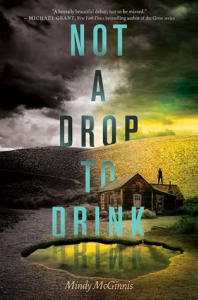
Katherine Tegan Books, September 2013.
Sadly, they’ve been taught that rape is a bad word. When they come up to the desk asking for books on the topic, they drop their voices, blush, whisper, or even talk around the word because it’s too difficult for them to pronounce the one simple syllable. SPEAK is about exactly the opposite – they should be able to say it, loudly and confidently, accusingly or sobbing, in whatever way they can squeeze it past their throats. It needs to be said.
Despite being banned in some places, SPEAK continues to be a cornerstone in my library, and many others. I always take the opportunity to tell the kid on the other side of the desk when they’re stumbling through their request that it’s OK – you can say it.
And if that means something to them on multiple levels, SPEAK just opened up the conversation.
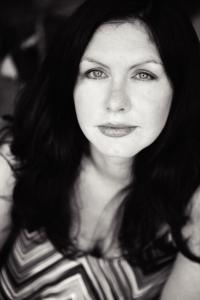
Mindy McGinnis.
Mindy McGinnis is an assistant YA librarian who lives in Ohio and cans her own food. She graduated from Otterbein University magna cum laude with a BA in English Literature and Religion. She loves being a writer, because it’s the only occupation where you can legitimately stare into space and claim to be working. Her debut novel, NOT A DROP TO DRINK, goes on sale 9/24/13.






